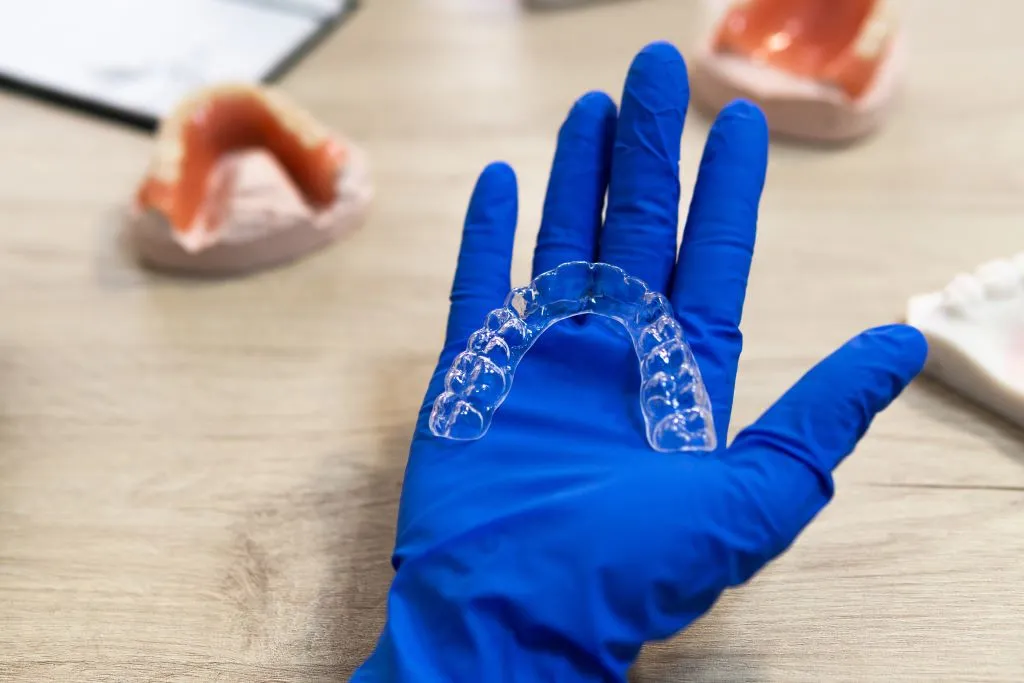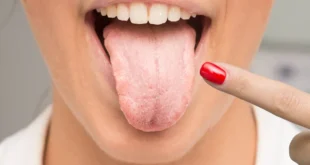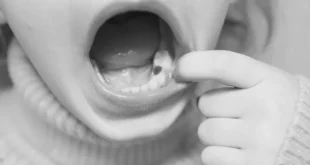Dental splints, also known as orthodontic splints or occlusal splints, are dental appliances commonly used to address various dental issues.
In this article, we’ll explore what dental splints are, their uses, types, and how to properly clean and maintain them.
1. What is a Dental Splint?
A dental splint is a custom-made dental device typically made of acrylic or other materials that fits over the teeth to provide support, stability, or protection. Splints are designed to address a range of dental conditions and are fabricated based on the individual’s specific needs and oral anatomy.
2. What is a Dental Splint Used For?
Serve several purposes, including:
- Temporomandibular Joint (TMJ) Disorders: Splints can help alleviate jaw pain, clicking, or popping associated with TMJ disorders by repositioning the jaw and reducing muscle tension.
- Bruxism: Splints, also known as night guards, are often prescribed to patients who grind or clench their teeth during sleep, protecting the teeth from wear and minimizing muscle strain.
- Dental Trauma: Following dental trauma or injury, splints may be used to stabilize loose or displaced teeth, allowing them to heal properly.
- Orthodontic Treatment: In orthodontics, splints may be used to maintain space between teeth or to stabilize teeth following orthodontic treatment.
3. Types of Dental Splints:
There are several types, including:
- Night Guards: Soft or hard acrylic appliances worn during sleep to protect the teeth from bruxism or teeth grinding.
- Bite Splints: Thicker, more durable splints used to address TMJ disorders by repositioning the jaw and promoting proper alignment.
- Orthodontic Retainers: Custom-made appliances worn after orthodontic treatment to maintain tooth alignment and prevent relapse.
- Temporary Splints: Provisional splints used immediately following dental trauma or surgery to stabilize the affected teeth or jaw.
4. How to Clean a Dental Splint:
Proper maintenance and cleaning of dental splints are essential to prevent bacterial buildup and ensure longevity. Here are some tips for cleaning a dental splint:
- Daily Cleaning: Rinse the splint under lukewarm water after each use to remove saliva and debris.
- Gentle Brushing: Use a soft-bristled toothbrush and mild soap or denture cleaner to gently brush the splint, taking care to avoid abrasive cleaners that may damage the appliance.
- Avoid Heat: Keep the splint away from hot water or heat sources, as excessive heat can distort the shape of the appliance.
- Regular Check-ups: Schedule regular dental check-ups to have your splint examined for wear and tear and to ensure proper fit and function.
Dental splints play a crucial role in the management of various dental conditions, providing support, stability, and protection to the teeth and jaw. By understanding the types, uses, and proper maintenance outlined in this article, individuals can better care for their oral health and optimize the effectiveness of their treatment.
 Colombianos en Calgary Colombianos en Calgary
Colombianos en Calgary Colombianos en Calgary






